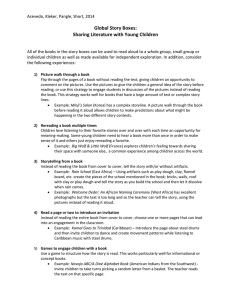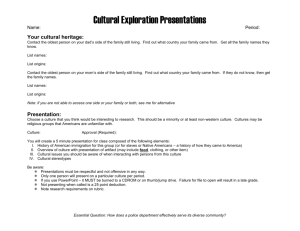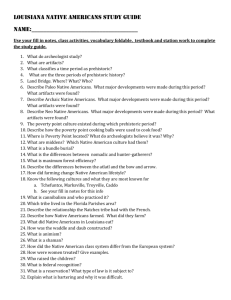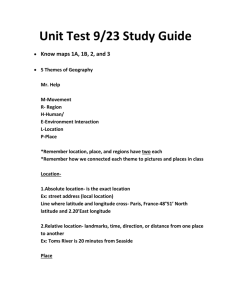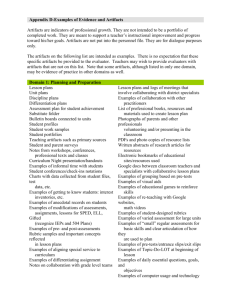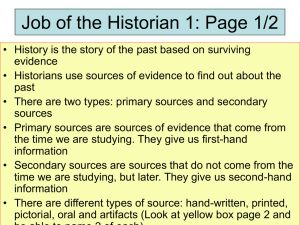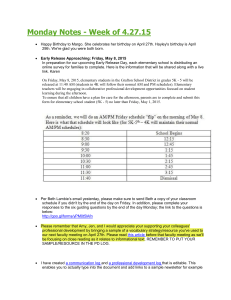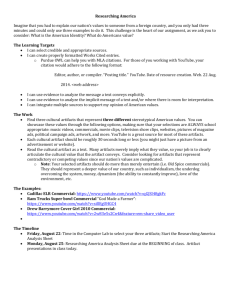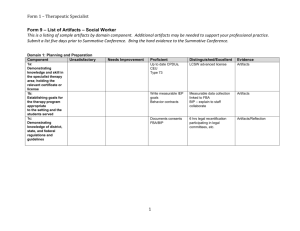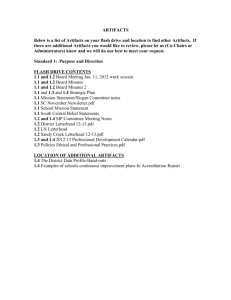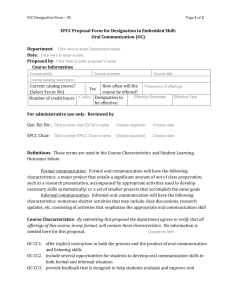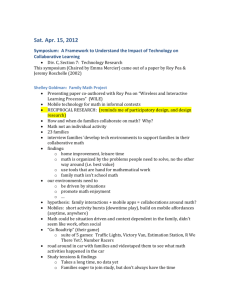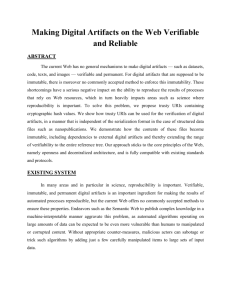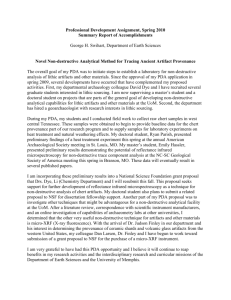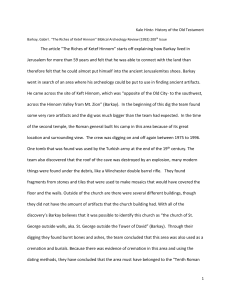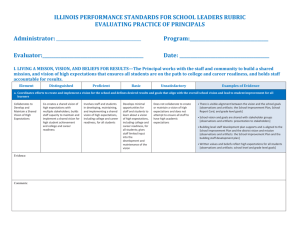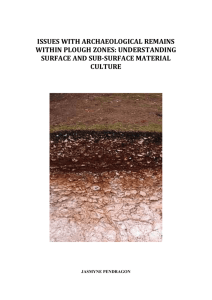Sharing Global Story Boxes in the Classroom
advertisement
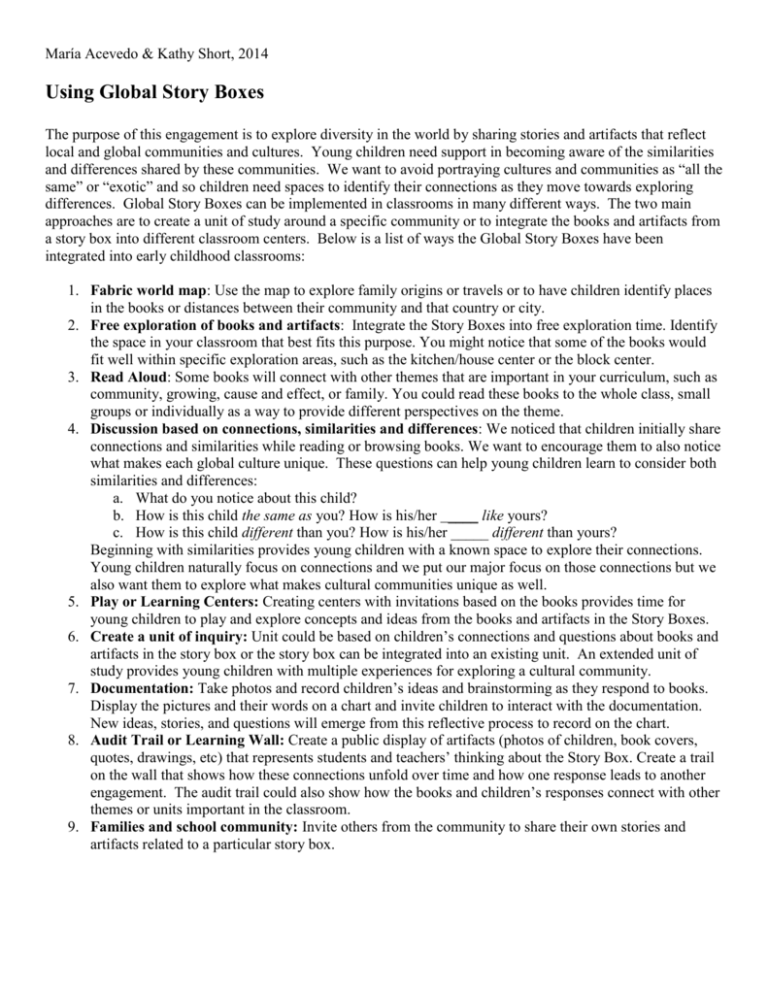
María Acevedo & Kathy Short, 2014 Using Global Story Boxes The purpose of this engagement is to explore diversity in the world by sharing stories and artifacts that reflect local and global communities and cultures. Young children need support in becoming aware of the similarities and differences shared by these communities. We want to avoid portraying cultures and communities as “all the same” or “exotic” and so children need spaces to identify their connections as they move towards exploring differences. Global Story Boxes can be implemented in classrooms in many different ways. The two main approaches are to create a unit of study around a specific community or to integrate the books and artifacts from a story box into different classroom centers. Below is a list of ways the Global Story Boxes have been integrated into early childhood classrooms: 1. Fabric world map: Use the map to explore family origins or travels or to have children identify places in the books or distances between their community and that country or city. 2. Free exploration of books and artifacts: Integrate the Story Boxes into free exploration time. Identify the space in your classroom that best fits this purpose. You might notice that some of the books would fit well within specific exploration areas, such as the kitchen/house center or the block center. 3. Read Aloud: Some books will connect with other themes that are important in your curriculum, such as community, growing, cause and effect, or family. You could read these books to the whole class, small groups or individually as a way to provide different perspectives on the theme. 4. Discussion based on connections, similarities and differences: We noticed that children initially share connections and similarities while reading or browsing books. We want to encourage them to also notice what makes each global culture unique. These questions can help young children learn to consider both similarities and differences: a. What do you notice about this child? b. How is this child the same as you? How is his/her ____ like yours? c. How is this child different than you? How is his/her _____ different than yours? Beginning with similarities provides young children with a known space to explore their connections. Young children naturally focus on connections and we put our major focus on those connections but we also want them to explore what makes cultural communities unique as well. 5. Play or Learning Centers: Creating centers with invitations based on the books provides time for young children to play and explore concepts and ideas from the books and artifacts in the Story Boxes. 6. Create a unit of inquiry: Unit could be based on children’s connections and questions about books and artifacts in the story box or the story box can be integrated into an existing unit. An extended unit of study provides young children with multiple experiences for exploring a cultural community. 7. Documentation: Take photos and record children’s ideas and brainstorming as they respond to books. Display the pictures and their words on a chart and invite children to interact with the documentation. New ideas, stories, and questions will emerge from this reflective process to record on the chart. 8. Audit Trail or Learning Wall: Create a public display of artifacts (photos of children, book covers, quotes, drawings, etc) that represents students and teachers’ thinking about the Story Box. Create a trail on the wall that shows how these connections unfold over time and how one response leads to another engagement. The audit trail could also show how the books and children’s responses connect with other themes or units important in the classroom. 9. Families and school community: Invite others from the community to share their own stories and artifacts related to a particular story box.

